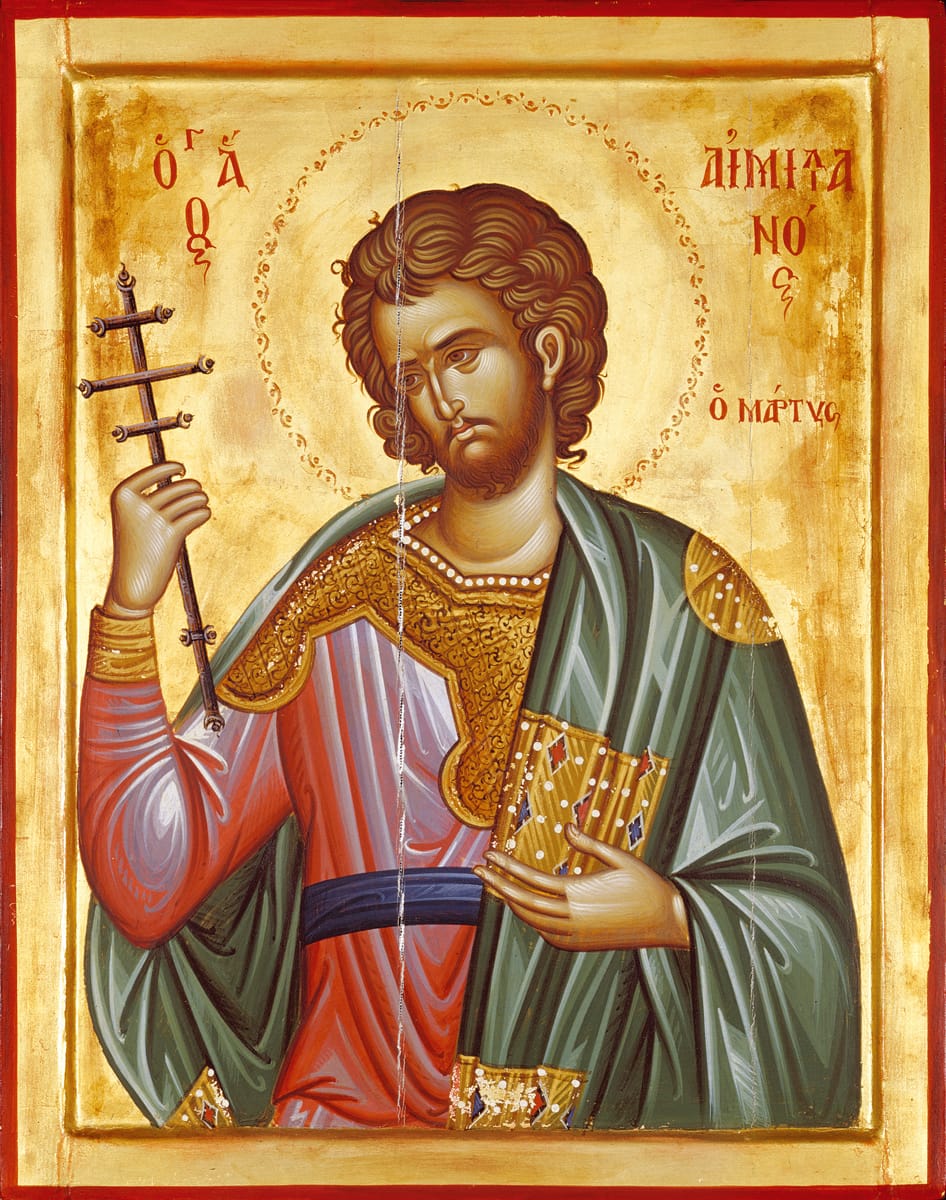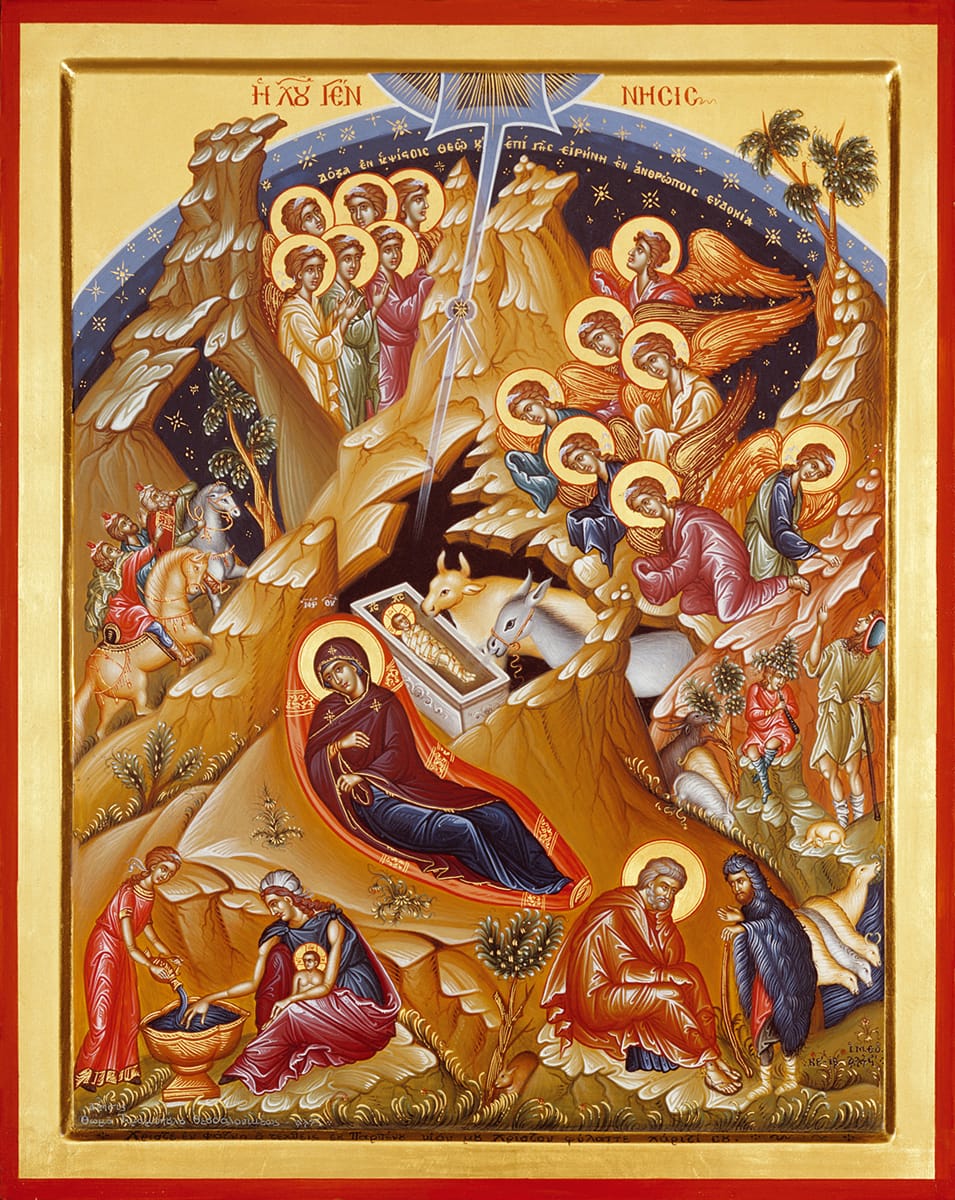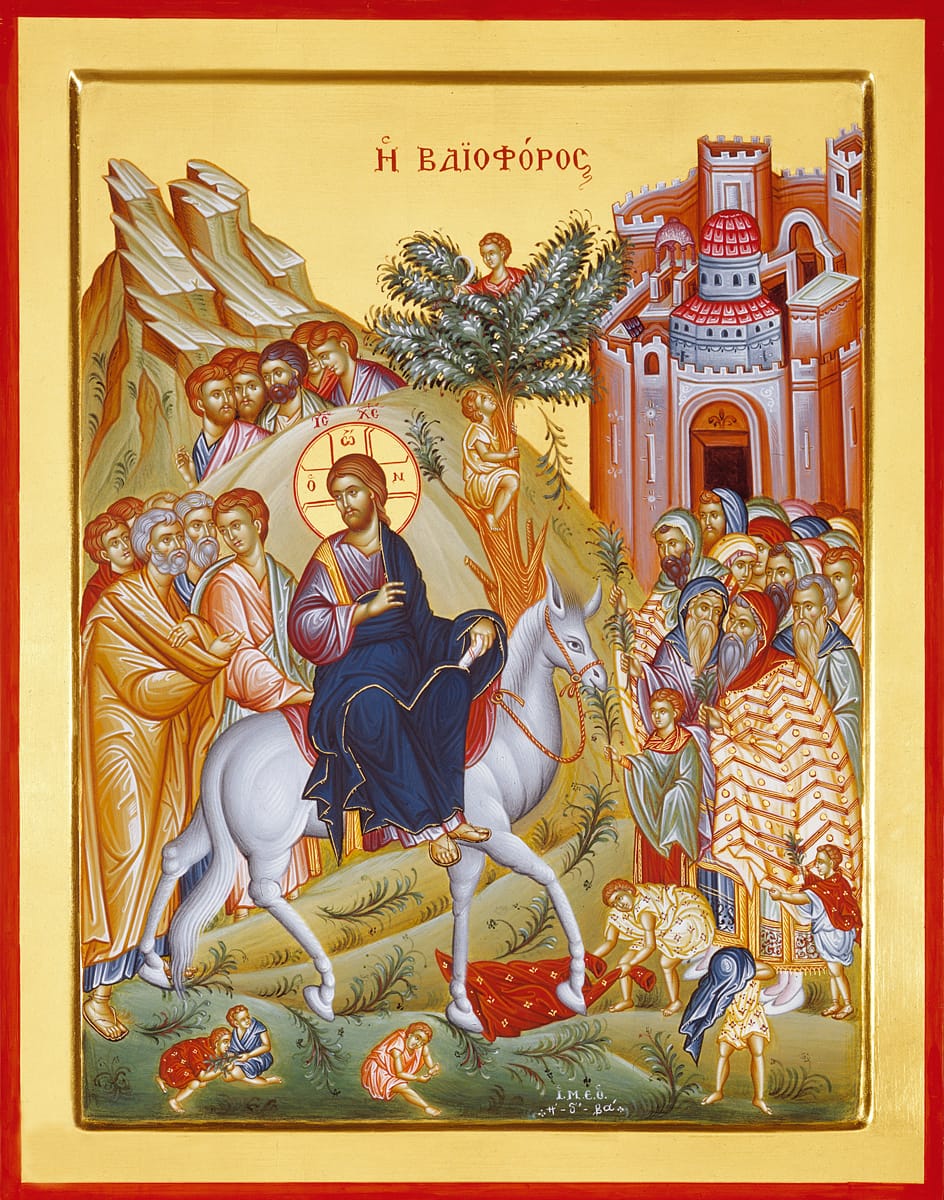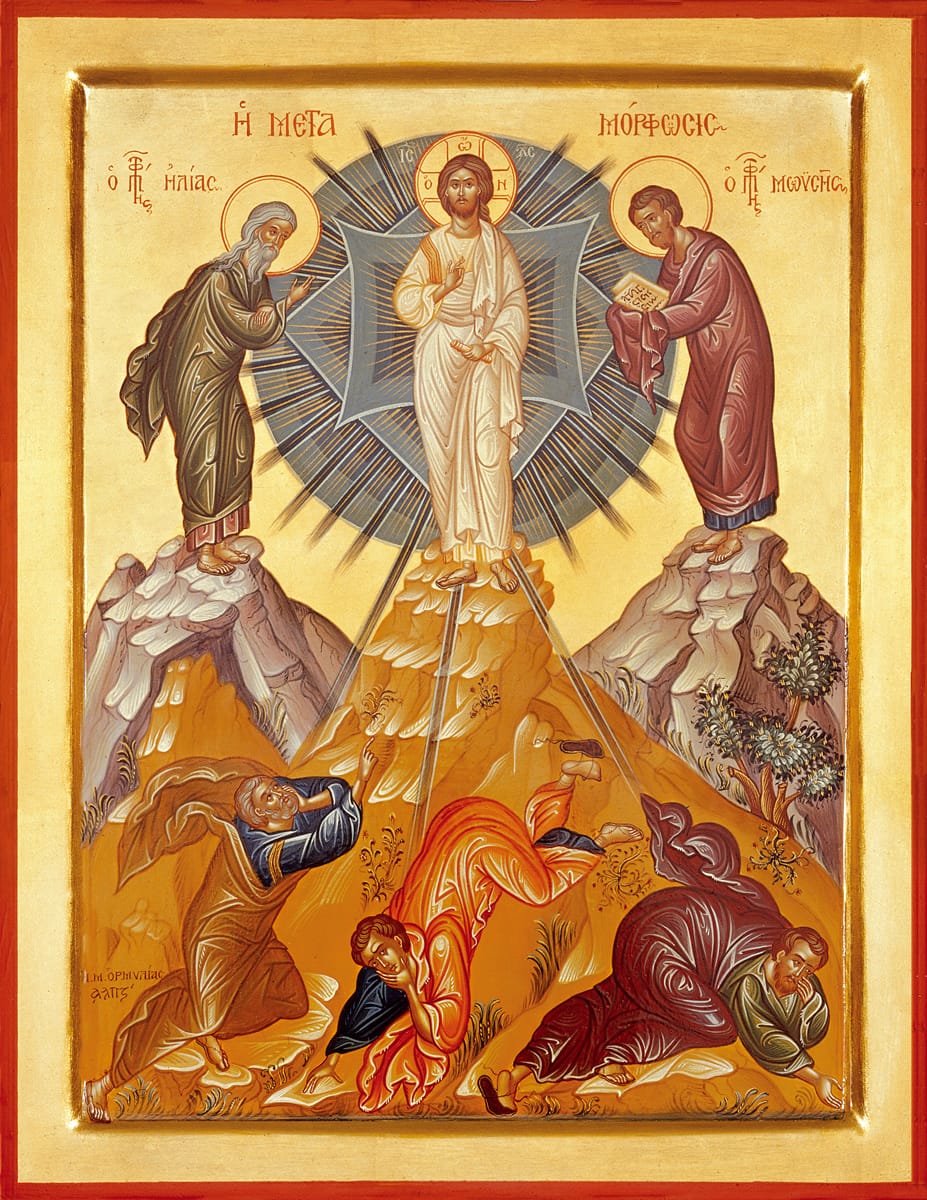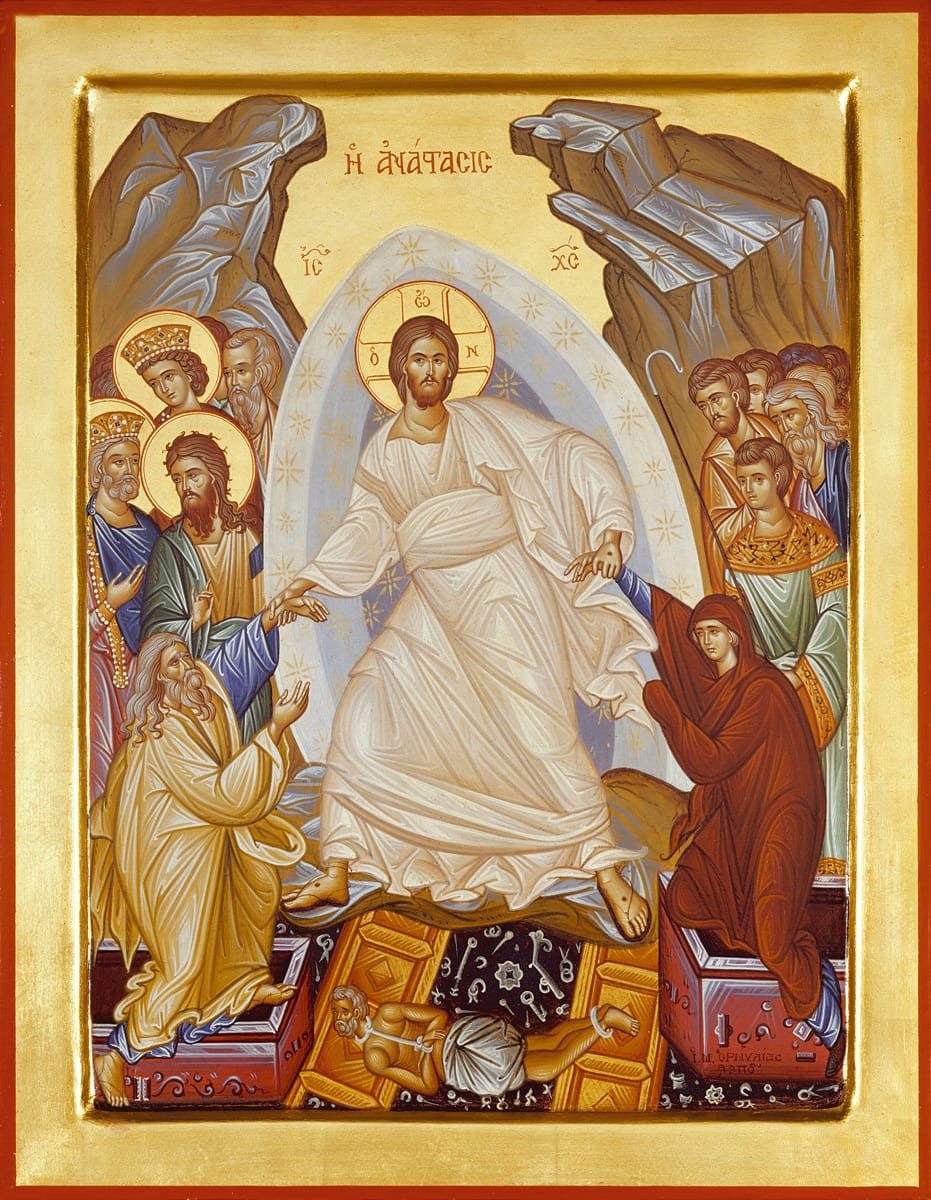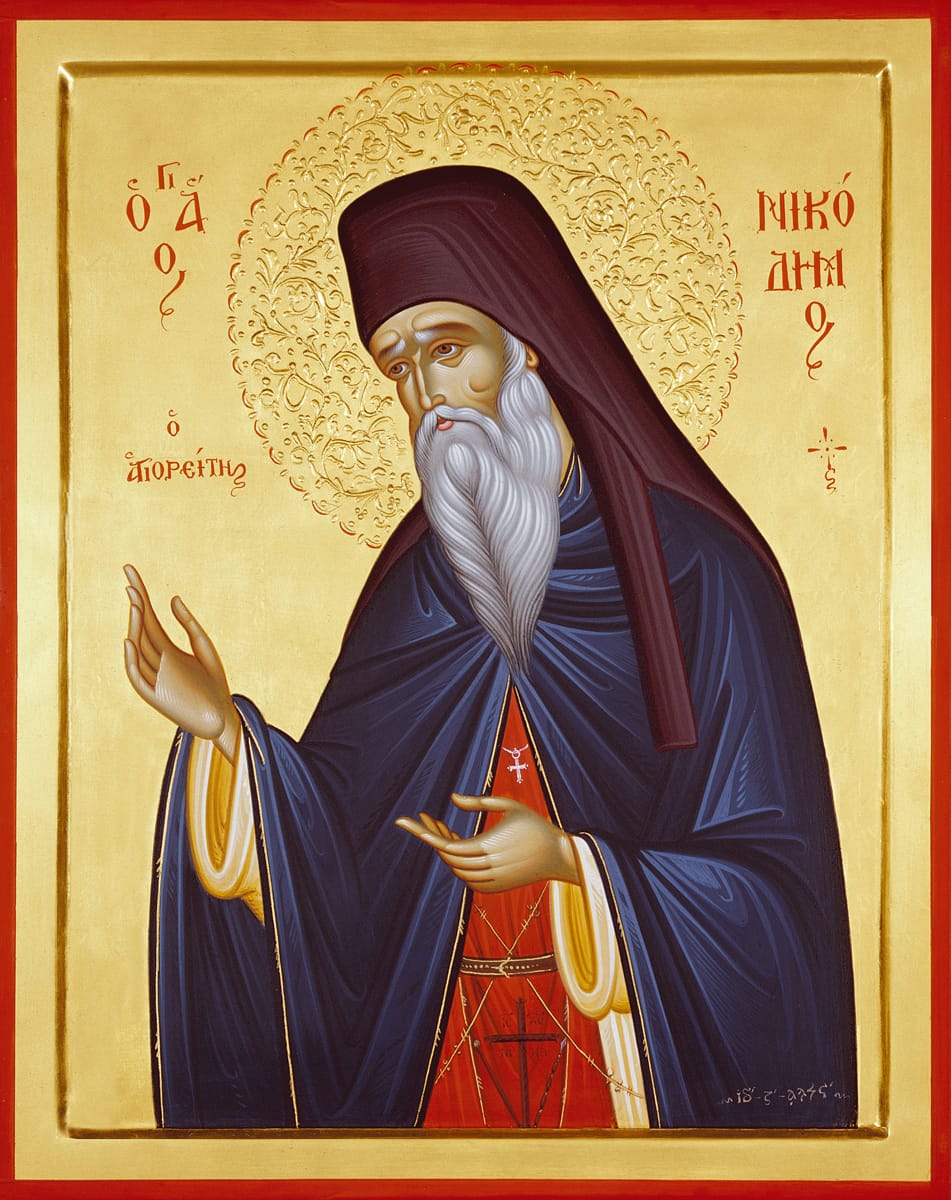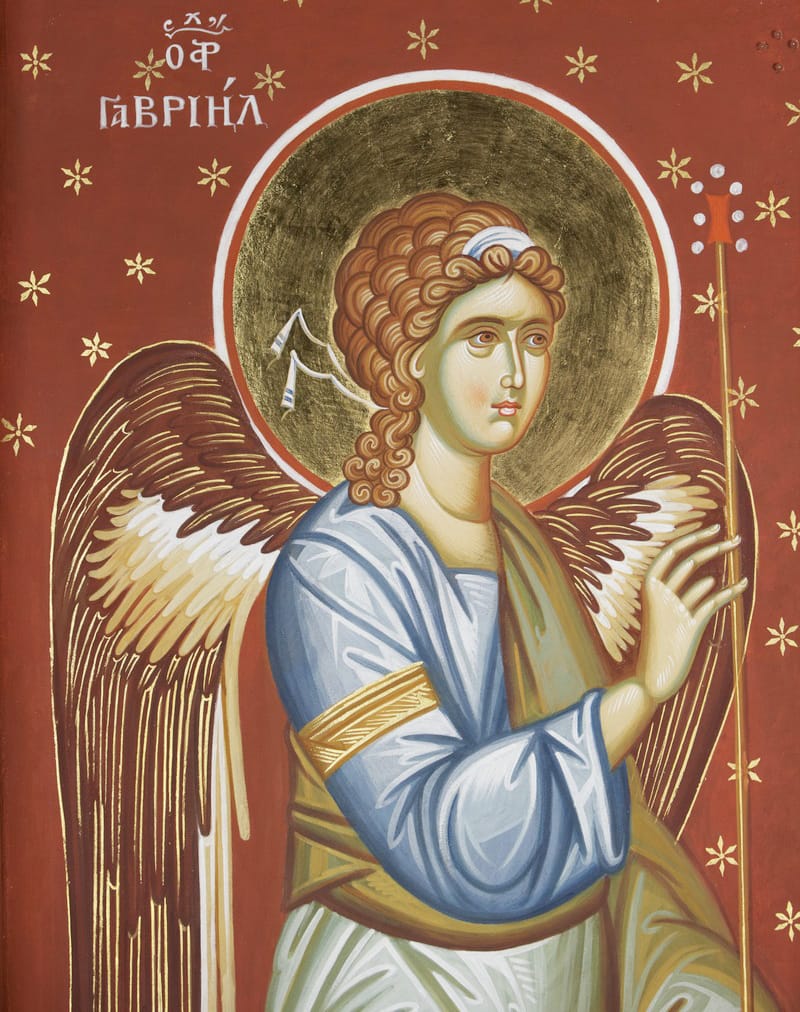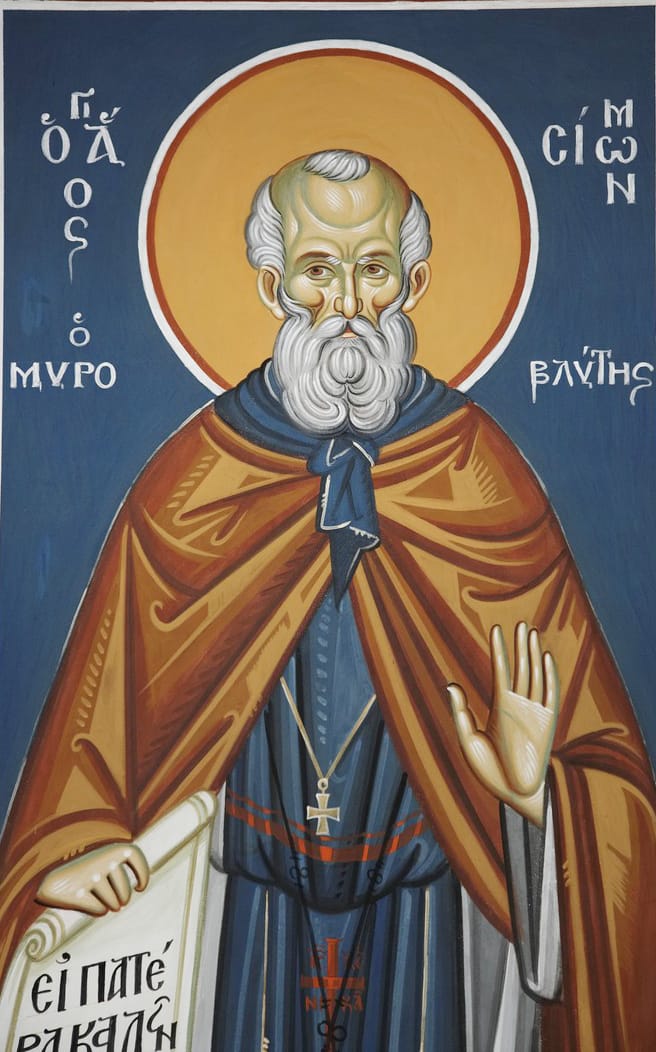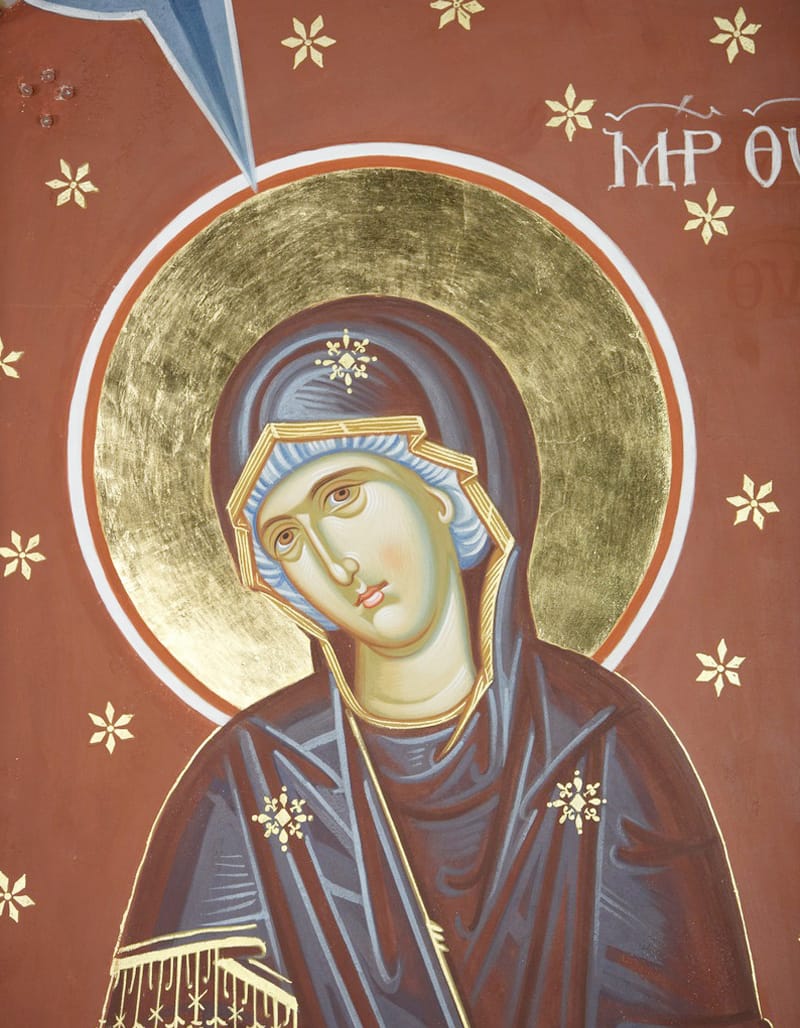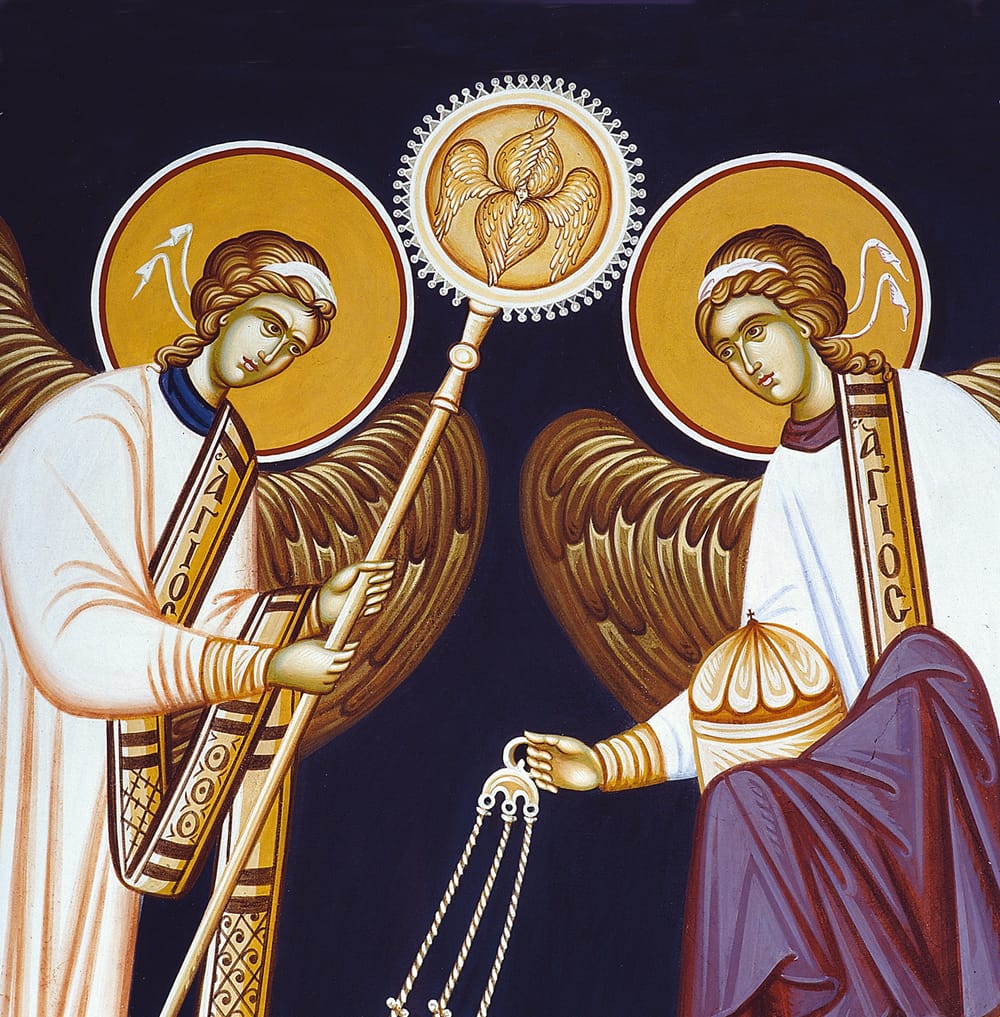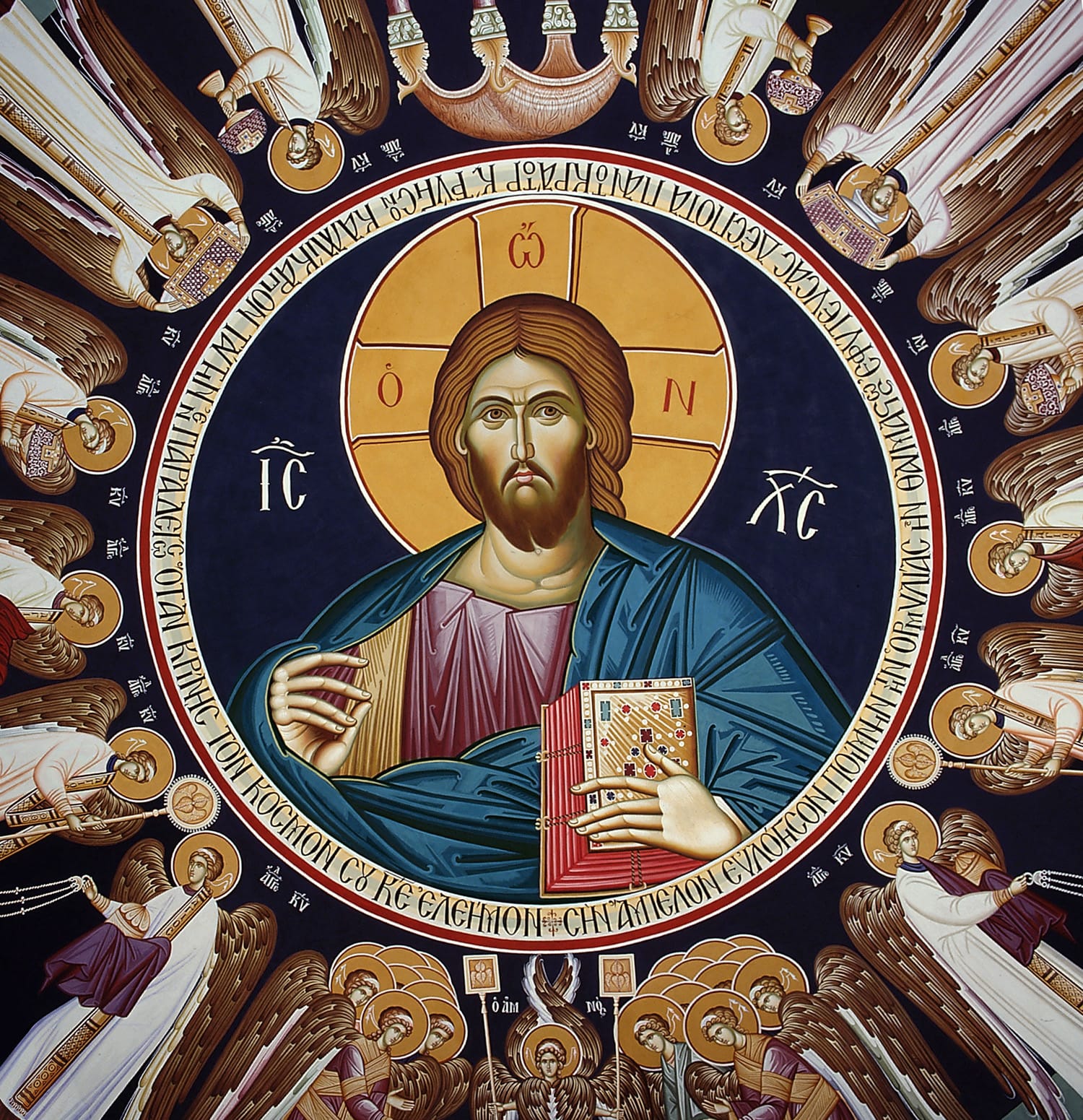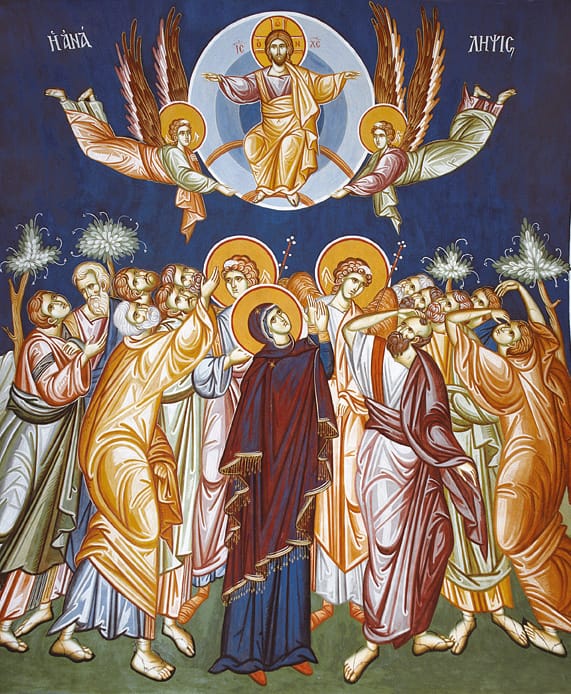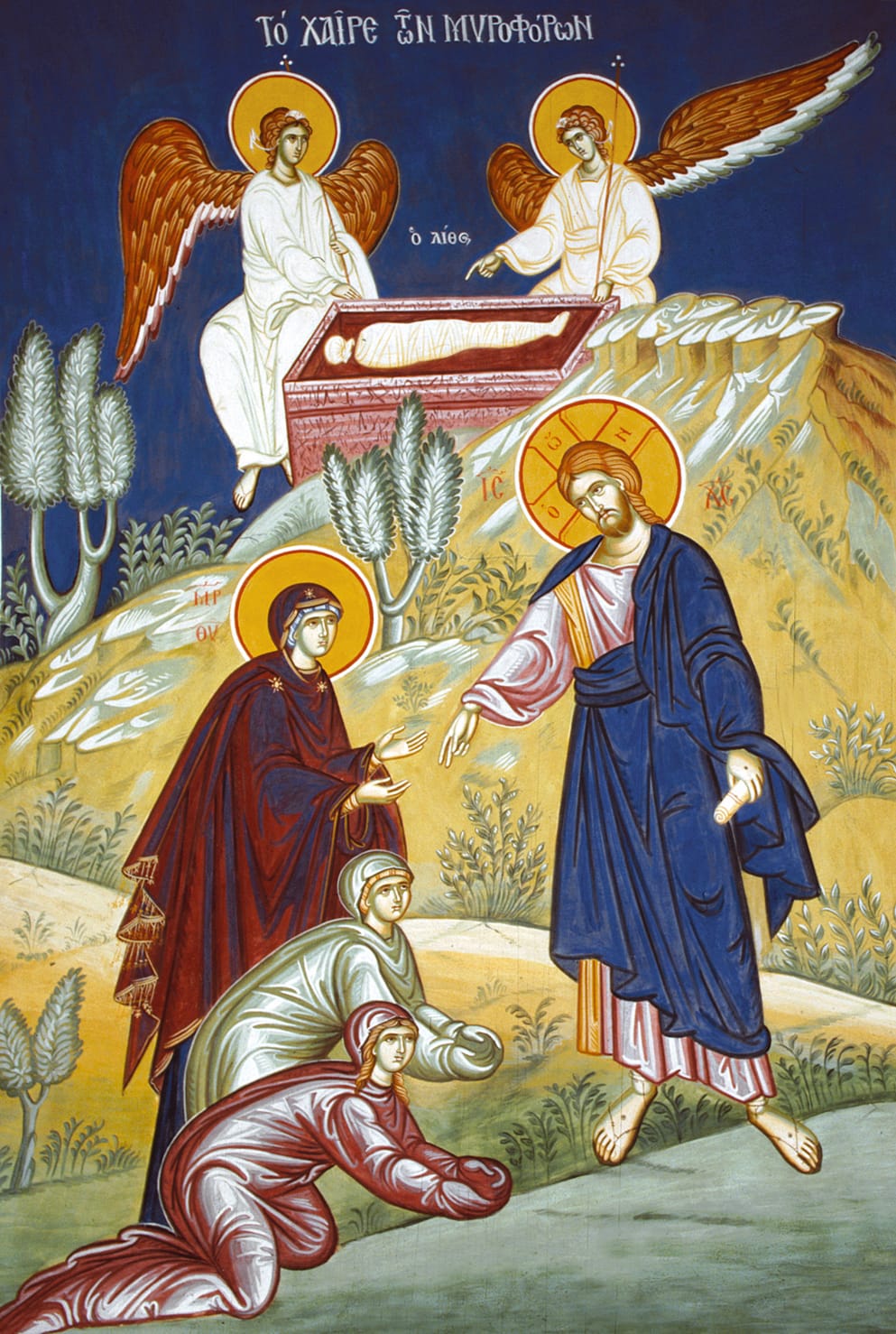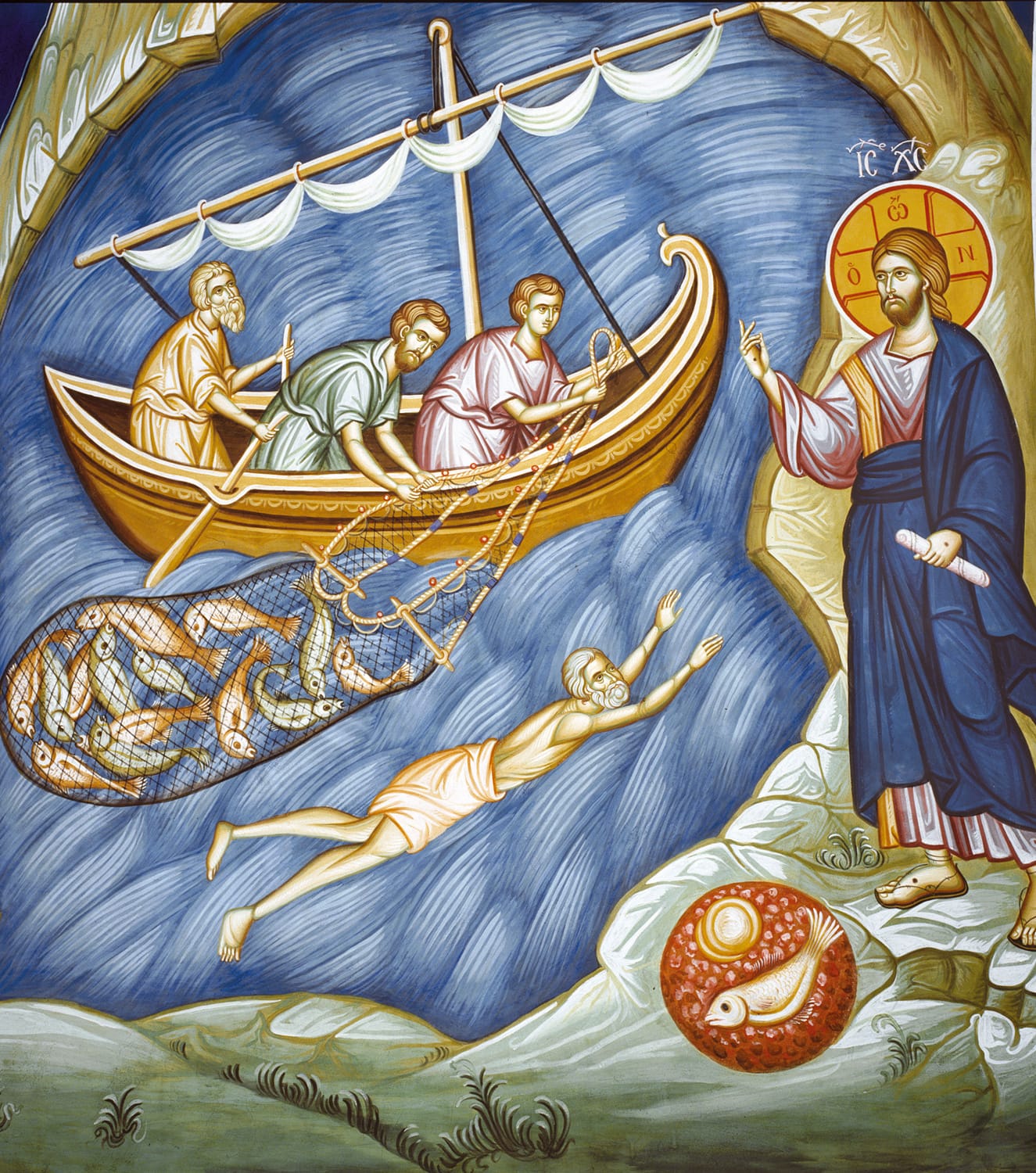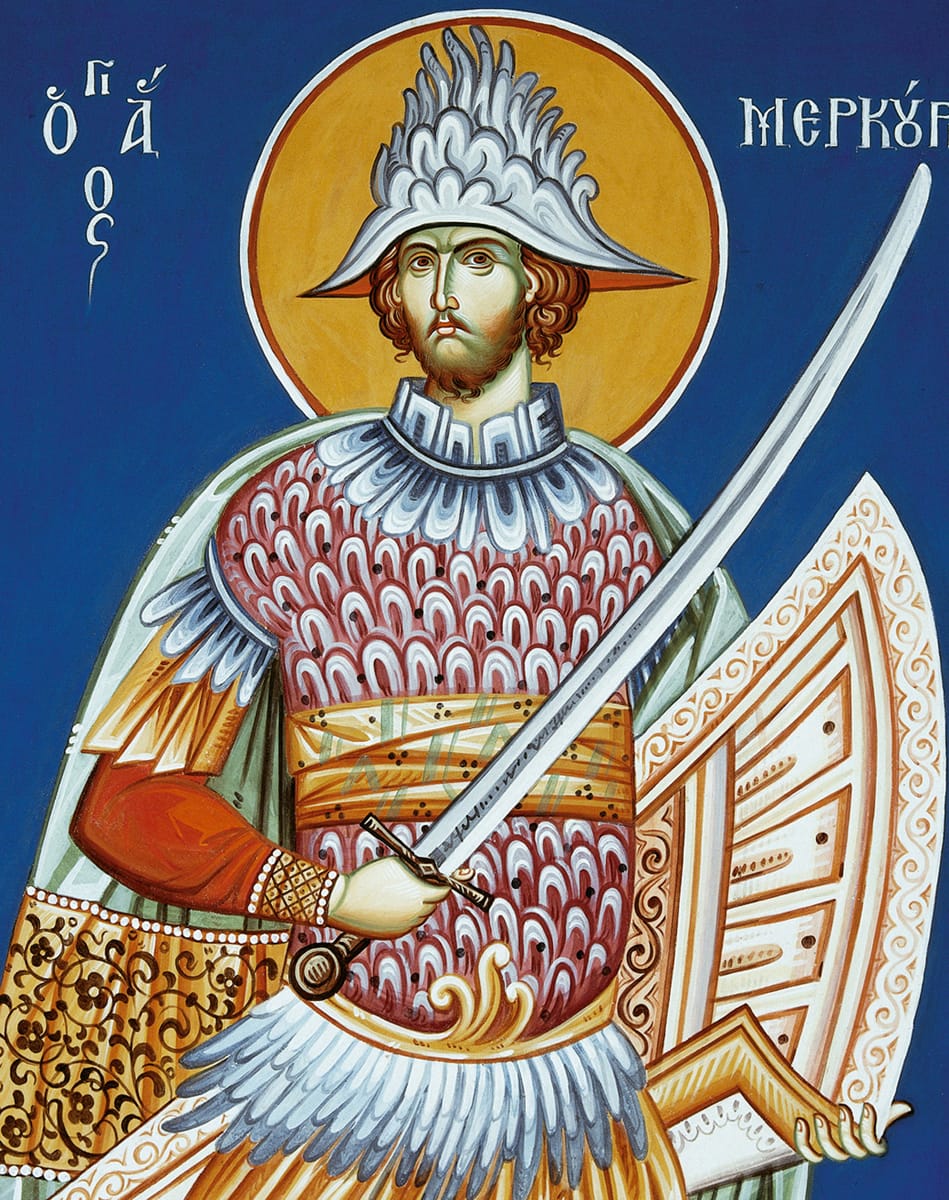Icon Painting Workshop
The monastery is embraced by the olive grove canvas surrounding it and extending and transferring to the icon painting ‘canvas’ the equivalent of the olive green Panselinos used. Both portable icons and murals pay particular attention to colour since this is considered a visible form of the light of transcending divinity. The icon painting team of the monastery uses olive green as a primer for facial surfaces, on which successive coats of ‘flesh’ are laid, to arrive at the most luminous ‘ornamentation’, so that faces can acquire the outworldly expression of sanctity and to be lit from the inside. “… Reaching Theosis in uniting with God, enlightened and mystically energised…”
The icon painting workshop of the monastery, faithfully observing icon painting tradition and assimilating, in discretion and respect, the rich wealth of experiencing it, then lays personal creative expression as one more ‘brush stroke’ on the colourful canvas of art.
The Katholikon Mural Painting
Ever since the icon painting workshop started operating, the sisters applied themselves to systematically studying and learning about Byzantine mural painting, seeking to find the ideal method to achieve long-lasting murals, like those preserved in the Katholika and dining halls of Mt. Athos monasteries and numerous other monuments of Eastern Orthodoxy.
This search led them to recognising the need for establishing a Diagnostic Centre for Works of Art, which launched a new scientific approach to the matter at hand, i.e., to bring to light the hidden secrets of Byzantine artists.
So, through this new, original and much-promising manner of exploring history, aesthetics and acquiring scientific knowledge about the materials used, the sister icon painters proceeded to implement in practice the results of their years of study and investigation: The Ktitor‘s [founder’s] works of the Katholikon of the monastery, which is the central point of both the building complex and, also, and more importantly, the core of the monastic way of life.
The decoration of the interior of the church was first begun in November 1996 with the impressive representation of the stern, yet loving, figure of the Pantocrator in the cupola, with this circular prayer inscription around it:
“SHEPHERD, BLESS YOUR VINE OF ORMYLIA, WHICH YOU MIRACULOUSLY PLANTED, LORD PANTOCRATOR, AND REAP ITS GOOD FRUIT IN PARADISE, WHEN YOU JUDGE YOUR PEOPLE, MERCIFUL LORD”
The Katholikon mural painting, which was undertaken exclusively by the nuns, follows a Macedonian school style of icon painting of the beginning of the 14th century. This resulted in a revelation of wondrous compositions of representative art and colours, a work of unique harmony and luminosity. Spectacular and imposing is the presentation of the Annunciation against a red, star-spangled background, flanking the royal gate and joyfully welcoming pilgrims, announcing the happy news to a world unaware of divine joy and the message of “our eternal hope”.
The mural painting in the Katholikon was completed in 2010, following a strenuous, intense-labour course, richly rewarding in various ways, which paved the way formore direct -literally tangible- communication with heavenly reality. Such communication is fast spreading to the other chapels of the Convent.
